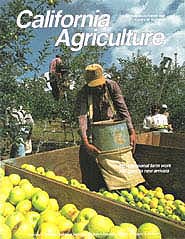All Issues

Most seasonal farm work still goes to new arrivals
Cover:
Despite the intent of the 1986 Immigration Reform and Control Act (IRCA), California farmers continue to rely on new immigrants for most field labor needs.
Photo by Jack Kelly Clark
September-October 1992
Volume 46, Number 5
Volume 46, Number 5





